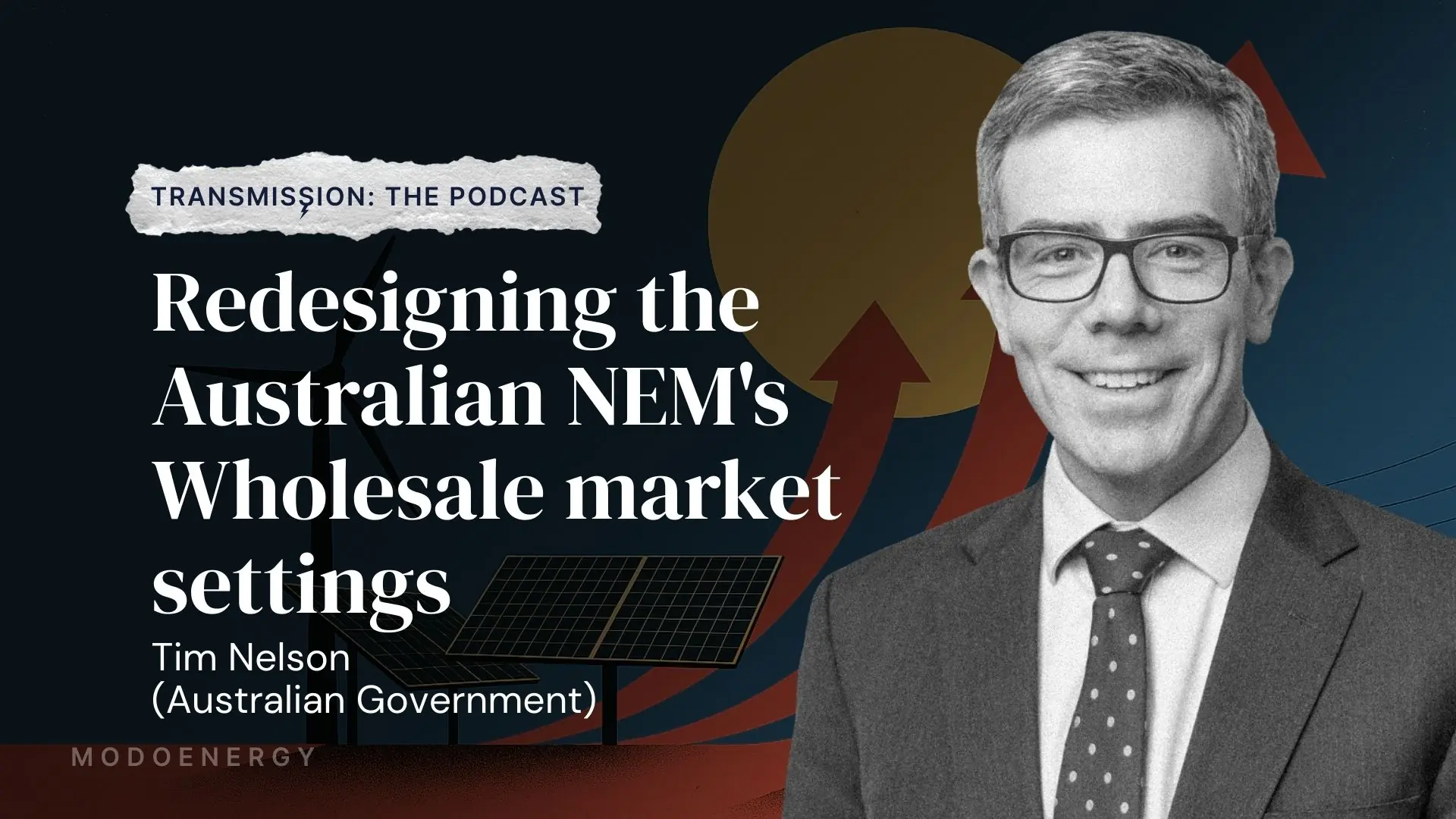A windy August has been the second-highest earning month of the year so far for batteries. We also saw changes to the Capacity Market, another tolling agreement, and changing cycling behavior. Alongside updates to our GB BESS Outlook series, this provided a range of subjects for our GB research team at Modo to cover.
If you only have 2 minutes, we’ve summarized the key findings from the month below.
August summary
- High wind generation combined with low demand in August to drive higher revenues for batteries, which capitalized on the 49 hours of negative pricing seen across the month.
- The price shapes seen across the month hint at what may be to come in the future. We estimated that two hour-batteries currently have the highest returns, which could be why they currently dominate the development pipeline.
- However, a changing price shape, with more negative pricing, will combine with falling Capex to improve the investment outlook for longer-duration batteries over time.
- These same trends could also be driving the battery augmentation we’ve seen this year. So far in 2024, operators have added 113 MWh of energy capacity to existing batteries through augmentation.
- Higher revenues in August also added to the growing trend of summer months offering more value than winter months. With this in mind, operators may be reassessing when they plan downtime for their batteries.
- Elsewhere, another tolling agreement was announced—this time a 7-year toll between Penso Power and Shell. We estimated that it could be worth around £75k/MW/year.
- Finally, big changes to the Capacity Market were announced this month. At the beginning of August, the ESO launched the 2024/25 edition of the Capacity Market. De-rating factors increased while targetted capacity decreased.
- Meanwhile, changes to rules around Extended Performance Testing aimed to minimize the impact of degradation.
Wind generation drove 49 hours of negative prices in August
Day-ahead wholesale power prices were negative for 49 hours in August. Only April saw more negative-priced hours - 53. The rise in negative-priced periods helped to increase battery revenues in late August. The low wholesale price minimums led to a rise in price spreads, increasing wholesale revenues and frequency response prices.

Balancing Mechanism dispatches further increased revenues. On 21st August, batteries provided over 600 MW of power through the Balancing Mechanism at 1 pm, giving them a third opportunity to profitably sell power during the day.
Read more about negative pricing in the full research article here.
Two-hour batteries currently have the highest returns
Earlier in August, we published our Investment Outlook, the third installment in our GB BESS Outlook series.
We mostly focus on battery revenues at Modo, but costs are the other side of the investment case for batteries. We estimated that a two-hour battery currently costs just under £600k/MW to construct.

Currently, future revenue opportunities and Capex costs mean that two-hour batteries have the highest average IRRs. But falling Capex and spread cannibalization will change this - which we explored in the latest GB BESS Outlook article.
Read more about the investment outlook for BESS, including a breakdown of who is active in the market here.
GB BESS Outlook, summarized
In August we also published an executive summary of the GB BESS Outlook, highlighting the key themes from across the three articles we’ve published so far.
If you only have 5 minutes to spare, we recommend you read this to get up to speed with the state of the battery market in Great Britain, before diving into the markets, revenues and investment outlooks.
Read the executive summary here.
Owners are also expanding the energy capacity of existing batteries
The same factors driving the beneficial outlook for two-hour batteries - a reduction in Capex and improved revenue outlook - could also be behind the augmentation of existing batteries. Augmentation is the process of increasing a battery’s energy capacity, and it is becoming increasingly important for Battery Energy Storage Systems.

Augmentation can significantly enhance revenue-generating potential. For example, a two-hour system could earn up to 88% more revenue than a one-hour system over its lifetime.
In the past year battery cell prices have fallen, reducing the cost of augmentation. Over 113 MWh of energy capacity was added in Great Britain through augmentation in 2024, with more planned by year-end.
Read more about how and why existing batteries are being augmented here.
Higher summer revenues may change downtime timings
Battery energy storage systems have been online 97% of the time over the past year, but this dropped to 92% in June. With summer now offering higher revenues than winter, do batteries need to shift their downtime?
Batteries were online more often in winter 2023/24 than summer 2024. A reduction in the amount of batteries online during summer is common due to scheduled maintenance or system upgrades.

Winter months have historically generated 55% more revenue for batteries than summer. However, since 2022, summer has offered higher earnings, due in part to heat waves and varying wind generation.
Read the full article to see when systems go offline, and how much this might cost here.
A second cycle has increased revenues by 42% for two-hour batteries in 2024
2024 has seen revenues move away from frequency response and towards wholesale trading and the Balancing Mechanism. So, how has the value of additional cycles changed as a result?
Cycling increased from 1.1 to 1.2 cycles per day in April, as battery energy storage revenues increased to their highest level in six months. This rise was driven by one-hour batteries, which cycle more than two-hour batteries, increasing their cycling rate.

However, two-hour batteries have gained the most from increasing their cycling rates. On average, a second cycle for two-hour batteries has increased revenues by 42%, compared to just 20% for one-hour batteries.
Read more about the value of additional cycles here.
Another tolling agreement announced - which we estimated was worth around £75k/MW/year
On August 6th, Penso Power announced a 7-year tolling agreement with Shell Energy for their 100 MW, 330 MWh battery under construction in Bramley, Hampshire. This battery is due to come online in Q4 2024.
Based on project economics, we estimated that a toll of £75k/MW/year would make the project viable while providing enough upside to Shell.

However, revenues do need to improve from current levels for the toll level to be met, and even further to provide a return. In our low forecast scenario, revenues only increase slightly to £63k/MW/year, meaning that Shell would lose money on the agreement.
This agreement follows the announcement of the two-year tolling agreement between Gresham House and Octopus Energy in June. It could mark a shift in the market towards more optimal risk allocation.
The toll could allow Penso Power to raise debt financing for the project. This capital could then be redeployed in other projects, allowing them to continue focusing on development. Shell, meanwhile, specializes in trading and effectively buys in the market risk.
Read more about the toll estimate and the broader landscape here.
Capacity market de-rating factors increased for BESS, but target capacity fell
At the beginning of August, the ESO launched the 2024/25 edition of the Capacity Market. This confirmed timelines for prequalification ahead of auctions next March.
It also confirmed derating factors and target capacities for both the T-1 and T-4 auctions, with some good news for battery energy storage.
De-rating factors for batteries increased by 20% in the 2025 T-1 auction, and 35% in the T-4 auction. This increase in de-rating factors reverses a previous downward trend in the Capacity Market. Even with the increase, derating factors are below their level two years ago.

The ESO has set capacity for next year’s T-1 auction at 6.5 GW, 1.2 GW below the previous auction. The target capacity for the T-4 auction is 44 GW, the same as the final target capacity for the previous auction.
Read more about the latest de-rating factors and capacity targets here.
Changes to Extended Performance Testing clarify degradation impact for batteries
We also looked at the impact of changes to Extended Performance Testing requirements for batteries holding Capacity Market contracts. Currently, batteries hold Capacity Market contracts for their full capacity, but degradation reduces a battery's energy capacity over time. This potentially impacts their ability to meet Capacity Market obligations.

A battery may only have 60% of its original capacity by the end of a 15-year Capacity Market agreement.
The rules have now been clarified to state that batteries can be augmented to increase their capacity back up to the contracted amount. Alternatively, batteries with delivery years after December 2024 can secondary trade capacity that they can’t meet to another unit or provider. The requirement for the EPT will proportionally reduce if the contract is secondary traded away.
Read more about the new EPT requirements here.
And finally - new markets for ancillary services could be worth up to £25k/MW/year
The ESO has been testing new ancillary services for stability, voltage, and constraint management through its ‘pathfinder’ schemes. So far, six batteries have won contracts to provide these services - mostly in the stability pathfinder.
The highest value contracts have gone to batteries providing stability services in Scotland, which are currently being built with grid-forming inverters. The value of these contracts ranges from £5-25k/MW/year.

Only one battery, Capenhurst, has a reactive power contract to manage voltage, worth £2.6k/MW/year. Wishaw, meanwhile, is the only battery with a constraint management contract. It has only been utilized once in the delivery year, with negligible revenues.
These services are still in development and are currently contracted via long-term tenders. However, we expect to see a shift towards shorter procurement timelines, with a day-ahead market planned for stability services as early as 2026.
Read more about each of the new markets available to batteries here.
On the podcast, Emma Pinchbeck joined Quentin to discuss the UK’s clean energy future
On Transmission this month, guests have been discussing the future of the energy system and the challenges facing the new government.
Emma Pinchbeck joined Quentin to discuss Energy UK's 'Mission Possible' Report, including the critical role of upcoming Contracts for Difference (CfD) auction rounds in achieving net-zero goals:
Also on the podcast this month:
- Merlin Hyman discusses Regens 'Accelerating Clean British Power’ report, which highlights their calls to Labour for its first 100 days, as well as the government’s actions to date and manifesto commitments.
- Claire Dykta takes a look at The ESO’s ‘Future Energy Scenarios: Pathways to Net Zero’ framework and the key actions required to achieve it, as well as the new market tools.
- Ed Birkett takes a deep dive into grid connection reform, as well as how changes in Contracts for Difference auctions could help reach net zero targets.







